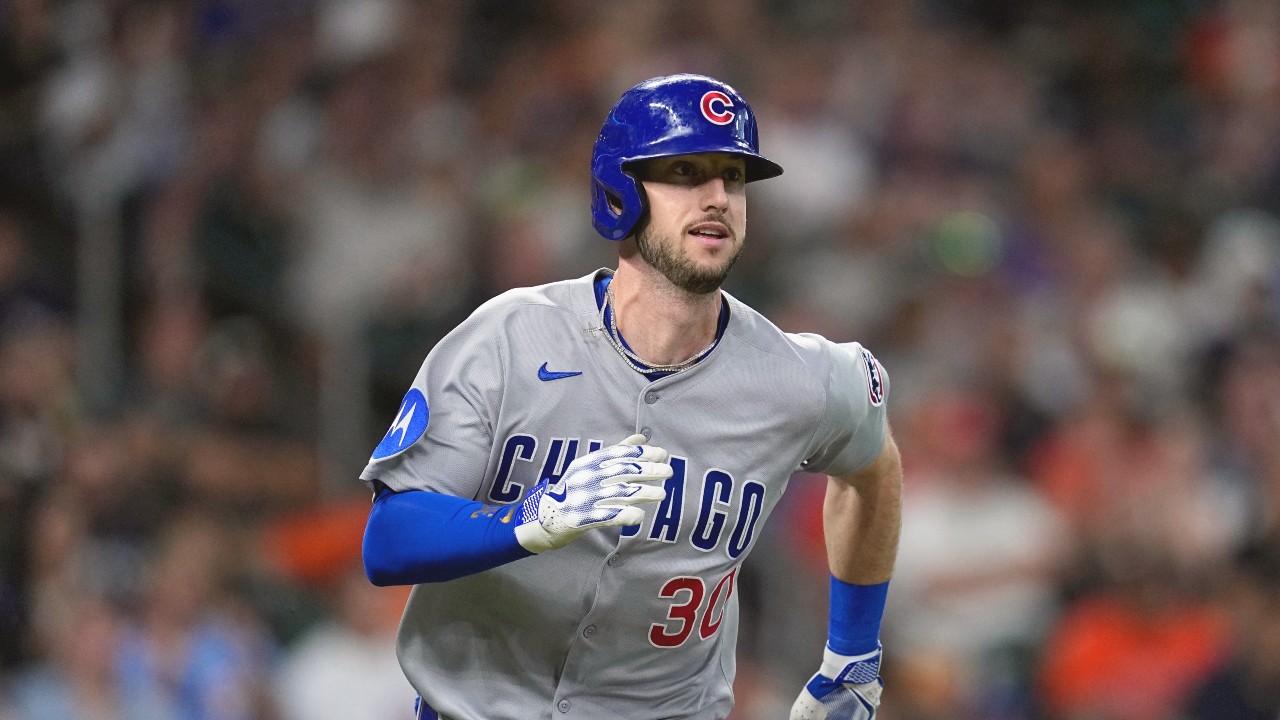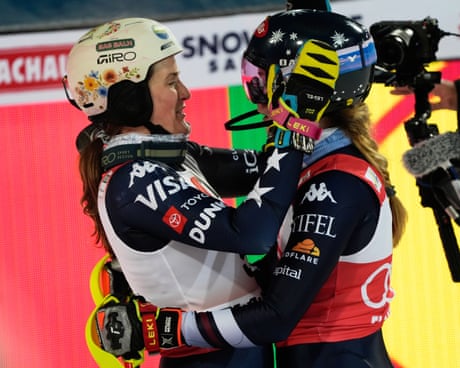
“YOU CAN’T BE WHAT YOU CAN’T SEE”
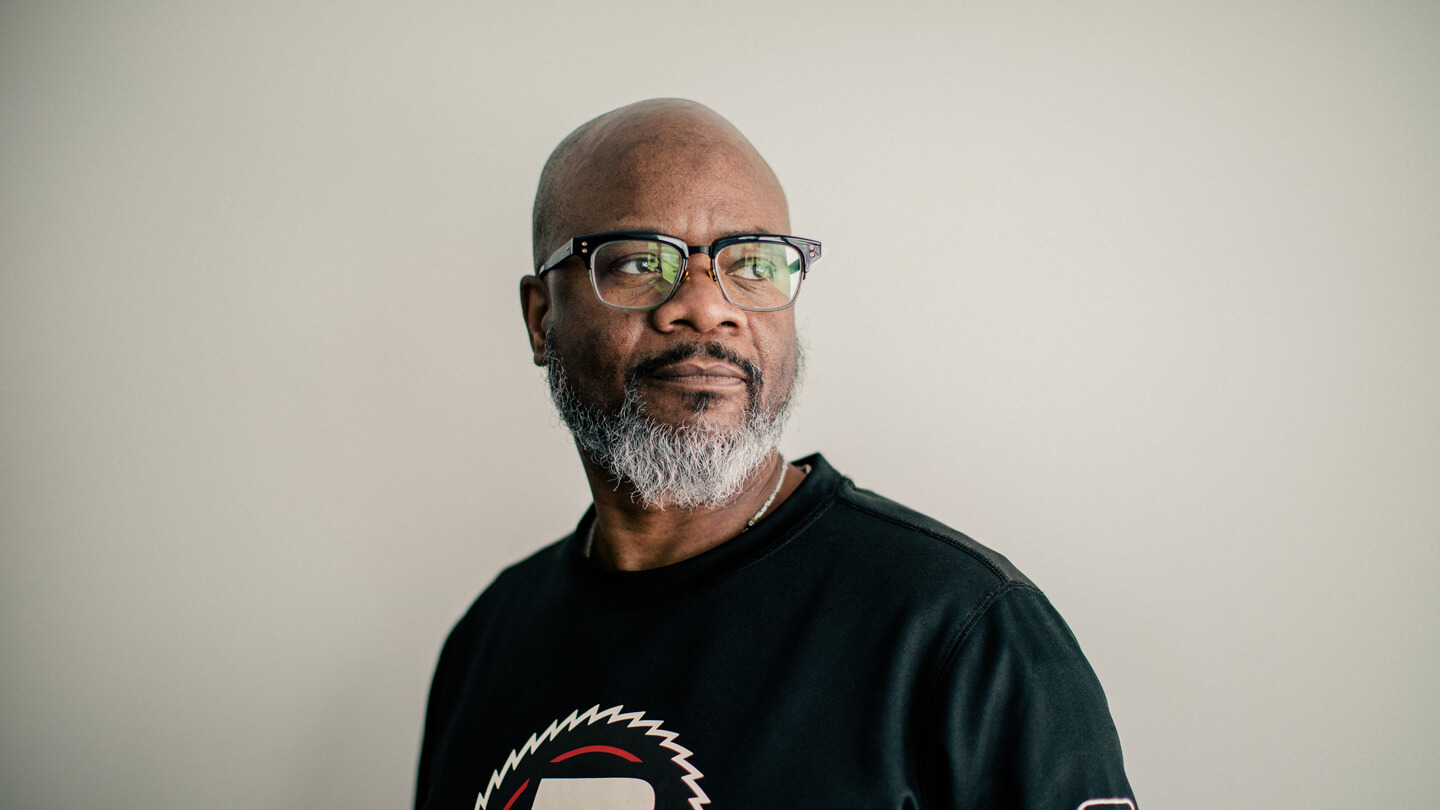
T
he most celebrated feats in sports take place on the playing surface. The early months of 2023, for example, have been dominated by LeBron James finally surpassing Kareem Abdul-Jabbar to become the NBA’s all-time leading scorer and Patrick Mahomes and Jalen Hurts becoming the first Black quarterbacks to square off in the Super Bowl.
But sometimes, quieter triumphs come on the sidelines, from those leading these athletes through the storm of battle each night. These milestone can also speak to important changes in the landscapes of leagues and sports.
The Canadian Football League has long been viewed as a diverse and accepting organization, especially compared to its southerly neighbour, the National Football League. But as inclusive as the CFL has been, there are still places where systemic inequality clearly rears its head.
Of the 70 head coaches employed by CFL teams since 2000, just 11 have been Black. What’s more, Black coaches have lasted just 2.36 years in the job on average during that span. The league currently has two Black head coaches: Hamilton’s Orlando Steinhauer and Ottawa’s newly minted bench boss Bob Dyce.
Steinhauer has been at the helm in Hamilton since 2018, but Dyce’s appointment is a fresh and noteworthy one. Proving his worth for the Redblacks first as a special teams coordinator (his unit allowing just six return touchdowns since he took over in 2016, a league-best mark over that nearly seven-year stretch), Dyce took over on an interim basis in October for the final four games of the 2022 season in place of Paul LaPolice. On Dec. 2, he was officially named the third head coach in Redblacks history and, importantly, became the CFL’s first Black Canadian head coach.
Dyce’s hiring is a significant and, in many ways, overdue milestone for a league that will crown its 109th champion later this year. And as he shook things up, making hires of his own in preparation for the 2023 season, the first-year bench boss also happened to build one of just two majority-Black coaching staffs in the CFL. Bringing in Khari Jones — one of two Black offensive coordinators in the league — Barron Miles to run the defence, Nate Taylor as his running backs coach and Travis Moore as his receivers coach, Dyce gave four other Black men new opportunities to lead an organization alongside him. It’s stories like his and his staff’s that pave the way for future generations, and in a month when we celebrate Black history, it’s also vital to mark the chapters currently being written.
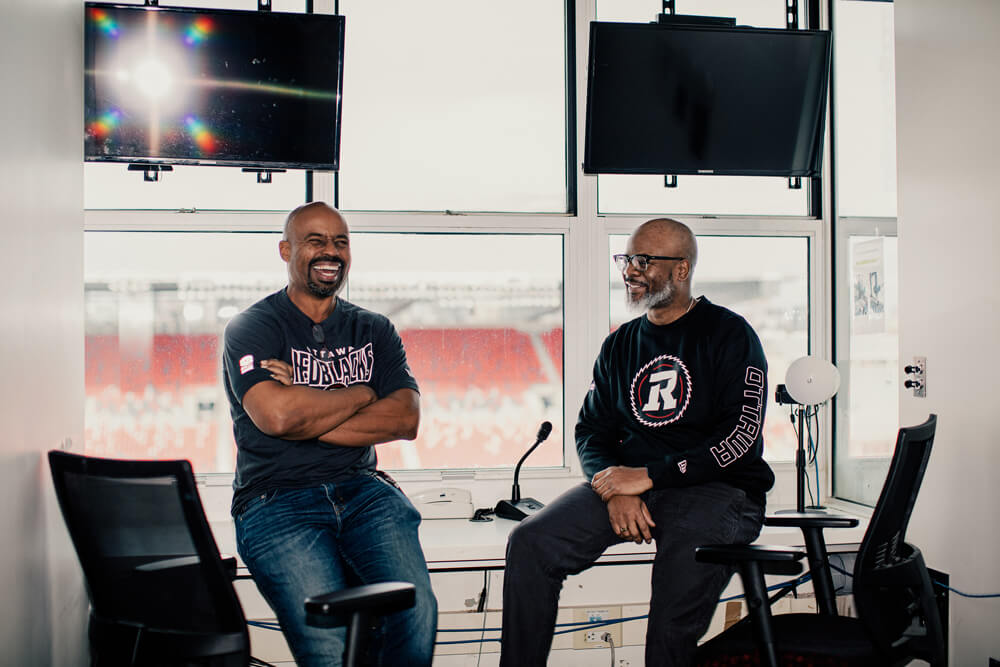
B
ob Dyce makes sure one thing is clear when he’s asked about his staff: he hired the best person for each job, regardless of skin colour.
“I was looking for great coaches,” Dyce says. “When I look at my coordinators, those are the two best, qualified guys that I hired and they both happen to be Black. When you look at my staff, it’s the same thing.
“Is diversity and representation a key thing for me? One-hundred per cent. But at the same time, I’m not going to do it at the expense of my coaching staff. My main goal is to make sure that we get the best coaches in here and these guys happened to be the best coaches and that’s how my staff ended up working out.”
Dyce’s introduction to the CFL came in 2003 with his hometown Winnipeg Blue Bombers, but it was the makeup of the prairie rival Saskatchewan Roughriders of the time that had the biggest impact on him.
Roy Shivers, who in 1995 made history as the first Black GM in all of pro football with the CFL’s Birmingham Barracudas, had been named GM in Saskatchewan in 1999, and with his subsequent hiring of Danny Barrett, the Riders had formed the first Black GM and head coach tandem in league history. Soon after, they promoted another notable former player in Richie Hall to defensive coordinator, making the staff one of the most diverse in the league at that time.
“Those are the guys that I aspired to [emulate]. They were great role models for me,” Dyce says. “They are the ones that made me believe that whatever’s out there is possibly attainable. Getting with and talking with those guys was a huge part of really letting me know this could be a great working opportunity going forward.”
Dyce’s days as a coach began in the Manitoba capital in 1992 as a member of the Canadian Junior Football League’s St. Vital Mustangs. At first, the former receiver was skeptical about whether he had the right stuff to make a meaningful impact on the next generation of players, but he caught the coaching bug and stuck with it. After four years in the CJFL, he moved to Canadian Interuniversity Sport as a receivers coach for the University of Manitoba Bisons, a stint he credits as crucial to his foundation as a leader.
Dyce explains that while he was always aware of his standing as one of the few Black coaches wherever he was, he was also fortunate to be surrounded by acceptance. He says he never faced overt inequalities in his career. But those barriers still exist.
It’s historically been an uphill battle for coaches who look like Dyce. A recent study on the NFL by TheGrio, a U.S. media outlet that covers news in the African American community, found “by every statistical measure” Black coaches have outperformed white coaches, yet see shorter tenures. The study, which included everyone to occupy the role from 1989 (when Art Shell became the first Black head coach in league history) to 2022, put the average tenure for a Black head coach at 4.5 years, more than a full season shorter than their white counterparts (5.68 years).
While a similar study has yet to be conducted in the CFL, representation among the league’s head coaches is still hugely lopsided.
Dyce, 57, waited nearly three decades for his first permanent head coaching gig. But despite being aware of the historical imbalances, he never let them impact how he approached his work or limit what he felt it was possible to achieve.
“Whether I’m the special teams coordinator or I’m the head coach, it is my desire to do a great job and be successful and work with a group of people to be successful,” he says. “Whether I’m leading a team or I’m leading a unit on the team, that is what I’m striving to do and that’s what I put all my energy into.”
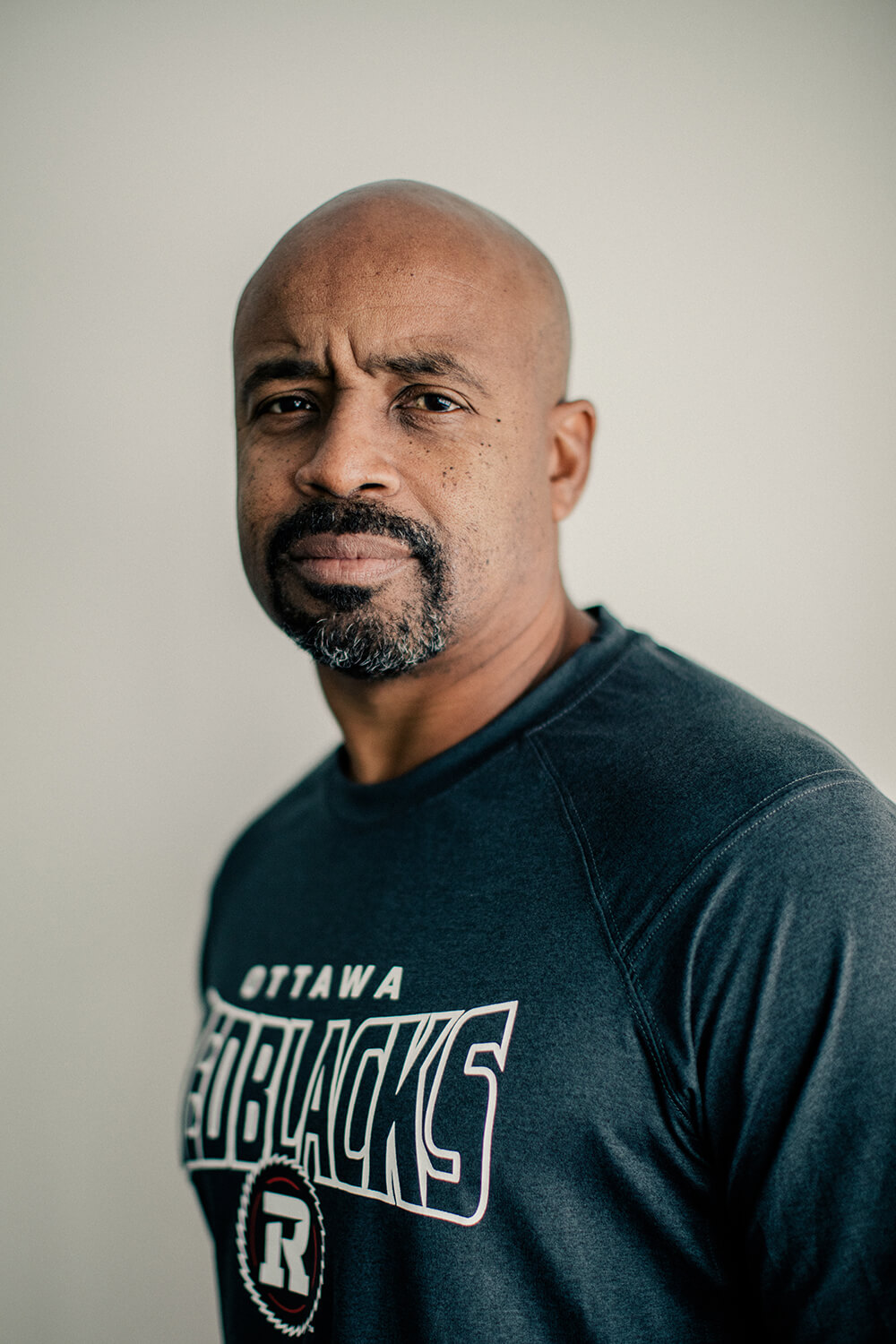
Y
ou can’t be what you can’t see,” is a belief Nate Taylor holds close to his heart.
Taylor, Ottawa’s running backs coach, is among the next generation of aspiring Black head coaches. And thus far, the journey for the 34-year-old has been, as he describes it, a fortunate one, especially for someone who looks like him.
Taylor grew up in La Salle, Que., the most southernly borough of Montreal, where he excelled at football as a youngster before playing at Concordia University as a standout defensive back. After a cup of coffee with the Montreal Alouettes as a training camp invitee, he immediately returned to the Stingers program in 2013, this time as a coach.
Taylor climbed the ranks quickly. In 2015, he was hired as offensive and special teams coordinator with the University of Ottawa Gee-Gees, where he spent the past seven seasons. This season with the Redblacks will be his first in the pro ranks.
Taylor understands the importance he holds as a Black coach in a league still dominated by white ones but, like Dyce, it’s not something he often concerns himself with. “I don’t always get to see how impactful it can be until I speak to someone who’s trying to get to where I am,” he says.
The son of a Canadian mother and Barbadian father, Taylor learned many hard truths from his dad, who moved to Canada with his own parents at six years old and was no stranger to discrimination. Taylor remembers one conversation in particular about living with darker skin. It was a chat that included a tutorial on how to conduct himself around police officers.
“I think something people need to realize is it’s an unfortunate harsh reality of raising a Black or mixed-race child. I did have those conversations with my father,” he says.
“He’s like, ‘Nathan, there are going to be people that don’t like you for no other reason than the colour of your skin. They’re not worth your time, they’re not worth your energy. It has nothing to do with you as a human being. It should never affect how you perceive yourself.”
Throughout his playing days, Taylor kept his father’s advice close, and that continued into his coaching career, which began when Concordia head coach Gerry McGrath made a 23-year-old with no prior coaching experience his team’s defensive backs coach.
“I’ve been very lucky to be surrounded by people who are pro-equality,” Taylor says. “I was a young Black kid from Montreal and [McGrath] still kind of took a shot on me and I felt he didn’t see that race, that colour. He just saw a kid that could become a good coach.”
Taylor now finds himself in the big leagues, his ultimate goal closer than ever. While he knows there are structural inequalities working against him, he doesn’t see the sense in dwelling on them.
“If I spent my time worrying about these things,” he says, “I’m not spending my time worrying about being the best coach I can possibly be, putting the best product on the field and helping our players develop as well as they can possibly develop.
“I know if I do what I’m supposed to do, things will go the way I want them to go,” he continues. “It’s a very internalized way of dealing with it but it can be mentally taxing if you spend a bunch of time worrying about having a shorter leash or having to perform at a certain level or else you’re not going to get another opportunity.”
It’s also possible Taylor could not have found a better landing spot for his first professional gig than working alongside a fellow Black Canadian in Dyce. It’s an opportunity he’s made sure to relish early on.
“He’s just a great dude and I love working for him,” Taylor says. “Whether he was Black or white, him being who he is as a leader and as mentor, is more profound than the colour of his skin.”

K
hari Jones remembers playing Pop Warner football as a kid and seeing crosses burning at a Ku Klux Klan rally across the street. He also vividly recalls the day he was profiled by a police officer.
Walking the streets of Sacramento, Calif. with a childhood friend, Jones was stopped by a couple of officers who said he fit the description of a man they were after and promptly placed their hands on their holsters. A sadly common tale for a Black man in America. The cops had the wrong guy and uncuffed Jones, but they’d already established a precedent.
“It’s tough because you don’t want to walk around angry, you don’t want to walk around worried about it, thinking about it,” Jones says. “I think you see a lot of guys that have probably stayed in Canada for that reason, because you don’t feel it as much here. That’s not to say it’s not here, as well, and things happen. But it’s definitely a different feel [in the United States].”
Talking about it now, Jones downplays his experience, noting there are people who have had it worse than him. But an uglier ending could have easily been his reality, too.
Jones was born in Hammond, Ind., a small city, heavily segregated when he lived there, that borders Chicago to the southeast. In 1976, his parents moved the family to the Gold Coast in hopes of a better life for Jones and his brother.
“It was a good upbringing. I was around a lot of diversity there in California, which is great. No big issues,” he says.
As Jones began to excel in football, however, the colour of his skin did impact his prospects.
“In general there weren’t a whole lot of us then,” he says of being a Black quarterback in the ‘80s. “My team was great, but I knew that if you were an athletic Black quarterback then a lot of times they tried to move you from quarterback and moved you to a different position.”
Despite being one of the best athletes on the field at any given time, Jones says he refrained from scrambling during his high school days in an effort to get scouts to take him seriously as a quarterback.
“It’s unfortunate. I think about it now, I knew that I was determined to play quarterback and not be shackled or anything. It did in a way hinder me because I wasn’t able to show everything probably that I could do but I started opening that up a little bit in college more,” he says. “The thing is they really just didn’t have many guys that looked like me playing in the NFL. I thought I might get a chance to go to camp somewhere. I think if it was now and I was coming out, that it would be different. [My athleticism] would’ve been a plus now.”
Jones committed to UC Davis, a program that had a history of starting tall, white pocket-style quarterbacks. The five-foot-11 and mobile Jones was in line to buck that trend, but says he was asked to wait an extra year before starting due to the staff’s lack of familiarity with a quarterback of his nature.
“My dad called it out,” he says. “He was my biggest supporter and allowed me to not have to worry about that and took all the brunt of that. He saw where it might have been unequal and there could’ve been some things going against me, and he made sure to call it out any chance he got. It was big because it allowed me to do what I did.”
Jones impressed when finally given his shot, throwing for more than 3,000 yards and running for more than 500 in his most prolific season, becoming just the second pivot to do that in the NCAA at that time. (Steve McNair was the other.)
Despite not getting his first professional start until age 30 (a performance that included three touchdowns and nearly 500 yards combined in the air and on the ground), Jones also made his mark in the CFL. He enjoyed a memorable 11-year career that included a Most Outstanding Player award in 2001 as a member of the Blue Bombers.
In 2009, two years after hanging up the cleats, Jones put on the headset as the quarterbacks coach and offensive coordinator of the Hamilton Tiger-Cats. From there, he spent the decade that followed quietly navigating his way through the ranks before an unexpected promotion while in Montreal. Alouettes head coach Mike Sherman had been fired just days before the start of the 2019 season and Jones, the team’s offensive coordinator at the time, was next in line for a chance to lead the sputtering franchise.
Lead he did, taking the Als to the playoffs for the first time in five years in his inaugural season at the helm. But after the 2020 season was cancelled by COVID, a .500 record in 2021 and a rough 1-3 start in 2022, Jones was fired. His exit seemed to arrive as quickly as he’d been brought in.
“I know the factors of being hired and fired go beyond me and I’m not the first Black or white guy to be fired that way and so I don’t hold grudges or anything like that,” Jones says. “But I’m looking forward to hopefully getting that opportunity again, because I know that I can do it.”
Jones says he’s striving to represent himself well and succeed as Ottawa’s offensive coordinator so his work continues to open the door for future generations of aspiring Black coaches. He adds he wants to see a day where “we’re not saying Black coordinators and Black heads coaches, we’re just saying coordinators and head coaches.”
He also noted that Dyce’s hiring was significant in that he was the winning candidate for the job, rather than simply the next-up in an interim role.
“It’s nice to be chosen as the head coach, and that’s the thing: A lot of the times, head coaches, when they get it they get it because someone was fired and they just kind of fall into it. That’s how I got it and that’s how he got it before,” Jones says.
“To go through the whole process and be chosen, that means something a little different.”

W
hile there’s still plenty of room for improvement within the league when it comes to diversity and inclusion, the CFL has taken steps recently to increase opportunities for aspiring coaches through its Diversity in Football Program, which launched in 2022.
The internship asks each team to bring one minority coach and one woman onto its staff for training camp and the preseason slate, allowing them to learn from established players and coaches and take part in everyday activities, getting their feet wet and building up a level of comfort.
Taylor took part in the program with the Redblacks in its inaugural year. It was the first time he met Dyce, and he clearly made a lasting impression on the veteran coach.
“That’s what helped solidify the fact that I was capable of working at this level,” says Taylor, who adds he picked Dyce’s brain incessantly about special teams during his stint. “Everyone I spoke to that was in [the Diversity in Football Program]loved every second of it. I loved every second of it and I think that shows the CFL is taking the steps.
“I kind of show that the program can be successful and it deserves to exist, and it’s a phenomenal opportunity for Black and women coaches to get involved in the CFL,” he continues. “The CFL is doing something and that something is working.”
Initiatives like the Diversity in Football Program are part of the ever-elusive solution to the systemic racial issues we continue to see in sport across North America. And so is the existence and visibility of coaches like Dyce, who’ve earned their successes more than we’re ever likely to fully know.
“When you see people in those positions, you know it’s possible, you know it’s attainable,” Jones says. “So to be a part of that, I don’t take that lightly at all.”
John Kealey/Sportsnet (5)





